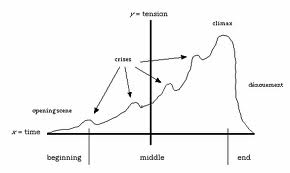 I’ve reached the 70,000 word mark of my current work-in-progress. Only 20,000 words to go and the threads are thankfully coming together as I’d hoped. It’s at this stage that I think a lot about pacing. I’m approaching the finish line. Things are coming to a head. Tension and conflict are building inexorably, like a river about to burst its banks. But how to control the ebb and flow of the floodtide? If it rages too swiftly, it might peak early and end in melodrama or anti-climax. If I dam it too much, it may lose momentum. How do you get the pacing just so?
I’ve reached the 70,000 word mark of my current work-in-progress. Only 20,000 words to go and the threads are thankfully coming together as I’d hoped. It’s at this stage that I think a lot about pacing. I’m approaching the finish line. Things are coming to a head. Tension and conflict are building inexorably, like a river about to burst its banks. But how to control the ebb and flow of the floodtide? If it rages too swiftly, it might peak early and end in melodrama or anti-climax. If I dam it too much, it may lose momentum. How do you get the pacing just so?
 Approaching the end, you want the reader to feel a real sense of urgency and desperation. If you’ve done your job well, the narrative and character arcs should be catapulting your story at a good speed towards the climax. But there are other ways to control pace that don’t involve the plot at all. Simple craft tips that are an essential part of a writer’s toolbox.
Approaching the end, you want the reader to feel a real sense of urgency and desperation. If you’ve done your job well, the narrative and character arcs should be catapulting your story at a good speed towards the climax. But there are other ways to control pace that don’t involve the plot at all. Simple craft tips that are an essential part of a writer’s toolbox.
Write short sentences, scenes and chapters. Condense dialogue and description, thereby heightening the significance of each word. Cut scenes short at vital moments to raise anxiety and suspense levels in your reader. Remember to vary your pacing though, even in these final chapters. Longer sentences and more measured prose will slow down your story. This sort of contrast is still important to allow readers to catch their breath.
 Another way to build tension is to write in slow motion. This might sound counterintuitive, but it’s a technique used all the time by film directors to increase dramatic impact. So at the crucial moment, say when a character drowns at sea, take your time. Describe the scene in close detail – the freezing bite of the waves, the taste of salt water, the horror of hopelessly holding onto that last breath. Or you might want to do the opposite. You might want to plunge your reader straight back into the action after the drowning. This is where I sometimes make an exception to the old show, don’t tell rule. Shock the reader with the brutal fact of the drowning by simply telling it in as blunt a way as possible.
Another way to build tension is to write in slow motion. This might sound counterintuitive, but it’s a technique used all the time by film directors to increase dramatic impact. So at the crucial moment, say when a character drowns at sea, take your time. Describe the scene in close detail – the freezing bite of the waves, the taste of salt water, the horror of hopelessly holding onto that last breath. Or you might want to do the opposite. You might want to plunge your reader straight back into the action after the drowning. This is where I sometimes make an exception to the old show, don’t tell rule. Shock the reader with the brutal fact of the drowning by simply telling it in as blunt a way as possible.
My last tip is to let the setting work for you. A storm at sea instantly ramps up suspense. A calm cove does the opposite. Spend some time getting the location right and it will give your writing an automatic boost. My story is rushing towards its (hopefully) dramatic conclusion. So it’s nice to know that I don’t need to rely on structure alone to control the pace. I have a few craft tricks up my sleeve as well.


Great and informative post Jen! It’s hard not to get caught up in the rush.
Yes, it’s supposed to be organised chaos, not just plain chaos!
Super post Jennifer:) All the best with the final 20 k.
Thanks for your good wishes Alissa!
Some great tips there Jennifer. Thanks…and go, go, GO! 🙂
Thanks 🙂